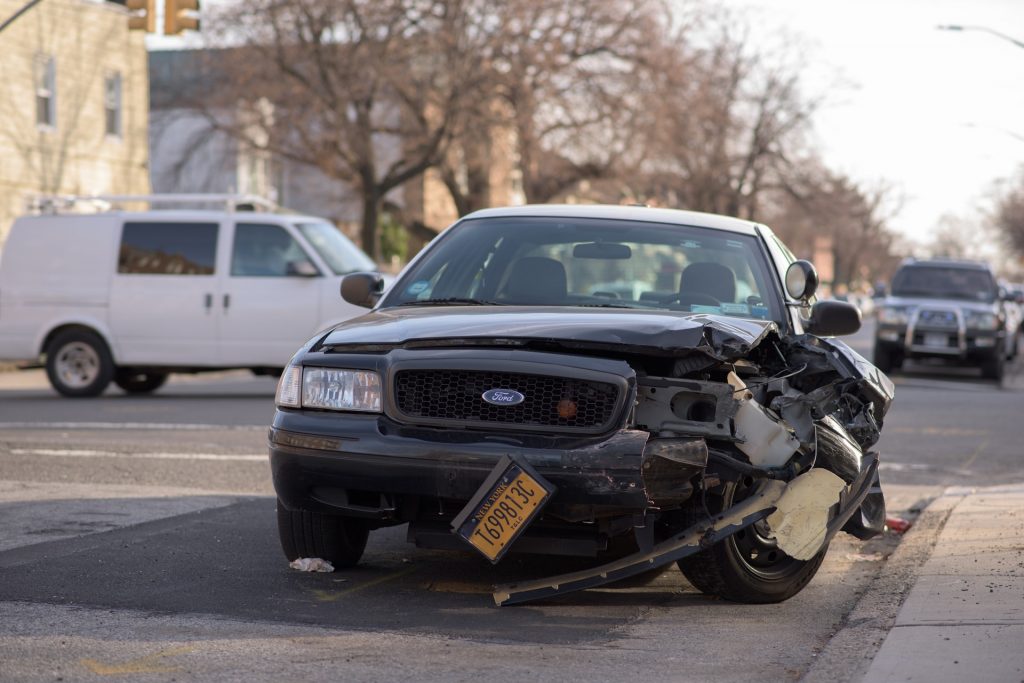What to do if you’re in a bus accident

Buses are one of the most common modes of transportation. Whether it be within the city for commuting, or for purposes of travel, many people travel on buses on a regular basis. According to the Ontario Motor Coach Association (OMCA), motor coach buses carry approximately 86 million people around Canada each year. And while the OMCA states that buses are one of the safest vehicles of transportation, accidents can still happen. Bus accidents can involve head, back and neck injuries, as well as psychological and emotional harm. Accidents can also affect a person’s life long after the incident.
While infrequent, buses can get into accidents like any other vehicle on the road. Statistics for bus accidents are difficult to track as they typically get categorized together with either car accidents or commercial vehicle and truck accidents. Still, there is a history of bus accidents like any other type of vehicle. In the 2014 Ontario Road Safety Annual Report, buses were found to be involved in 536 collisions, with nine of them being fatal.
One of the worst bus accidents to happen in Canada in the past few years was when a bus collided with a train in Ottawa in 2013. The accident killed six people and injured many more. The Transportation Safety Board of Canada (TSB) found that the driver had become distracted by the video screens he was required to monitor as part of his job. From the accident, the TSB began reviewing ways for drivers to not be distracted while driving, as well as began implementing standards for commercial passenger buses to reduce injuries. The TSB has also equipped passenger buses with black boxes to record data and understand the moments leading up to a crash, similar to those found in airplanes.
In August 2014, a bus rolled over on a mountain pass in British Columbia, injuring all 56 passengers on board. The transportation ministry later said the crash was most likely caused by driver error. Passengers of the bus filed lawsuits to the B.C. Supreme Court after many passengers suffered injuries such as neck, head and back injuries, claiming the design of the highway and maintenance were not up to standard. The lawsuit was filed against the transportation ministry as well as the highway maintenance company, and several other defendants.
In October of last year, a tour bus travelling through eastern Ontario and carrying 50 seniors rolled over while driving through a turn. 26 people were injured. One of the passengers says that the curve the bus was making might have been too sharp, so the driver probably stepped on the brakes too hard causing it to roll. The bus driver was later charged with careless driving.
What are the type of causes of bus accidents?
Common causes of bus accidents are similar to any vehicle on the road. Speeding, driver distraction, driver negligence, and intoxication are just a few of the main causes. Mechanical failures and lack of maintenance to the vehicles can also factor into the accidents.
Bus driver negligence and fatigue are two factors that can cause accidents. Some bus drivers may not be properly trained, or may just be bad drivers. Bus drivers are also required to work long hours without much rest. According to Motor Coach Canada, drivers can drive up to 13 hours in a 24-hour work day. Fatigue can easily cause drivers to make wrong decisions behind the wheel.
Bad weather can also cause accidents. Like any type of driving, poor road conditions can increase the likelihood of accidents. This past December, many vehicles, including several city buses, slid down a slippery stretch of Montréal road. The icy and snowy conditions led to a pileup of several vehicles. Poor preparation for bad weather can lead to potential accidents.
One of the big arguments towards improving bus safety involves seat belts on buses. Transport Canada says that buses in Canada are not required to be equipped with seat belts. Seat belts have not been found to increase the safety of passengers on motor coaches. The way buses are designed in a compartmentalized fashion has also ensured that passengers will stay in the bus in accidents. Lastly, often motor coaches are meant to be a comfortable form of transportation, and passengers may be unwilling to wear seat belts for long bus rides.
What to do in the wake of an accident
Any motor accident can be disorienting and traumatic. If you ever find yourself in a bus accident, it’s important to note these few things to do afterwards. First, seek medical attention. Typically the bus driver or the staff on board will call for assistance, but if they are injured, killed, or refuse to call for help, call 911. Not only should medical help be sought, the accident should be reported to the local law enforcement.
If you are able to, document what you can at the scene of the accident. Exchange contact information with other passengers, with the driver and anyone else involved in the accident. Also, take pictures and videos of the scene of the accident. Once again, documenting the accident should only be done if you are well enough to do so. Always seek medical attention first.
If you are ever injured or have been injured in a commercial transportation accident, contact Harris Law in Kitchener at 519-725-8000 or online for a free one-hour consultation.













